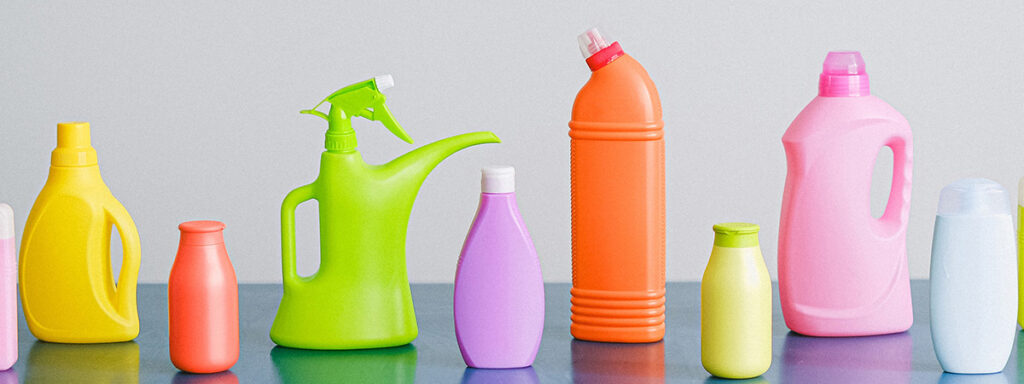
With winter comes colder weather and winter viruses. When someone gets sick in your household, you understandably don’t want it spreading to others. But what are the most effective methods for disinfecting your home?
- Cleaning – removes dirt and germs
- Disinfecting – kills germs (but doesn’t necessarily remove them or clean)
What to use
Any commercially labelled disinfectant will be beneficial in killing germs from your home and stop their spread. While it may help remove surface mould and dirt, vinegar and other ‘natural’ remedies are unlikely to kill bacteria or viruses.
The Australian Governments Therapeutic Goods Administration (TGA) must approve any advertised claim, including if an item is effective against COVID-19. Therefore, most of the products you see on the shelves that have this label should be fine – but if you want to check, they have a list of approved products on their website.
Follow the product instructions to ensure you use it effectively – some disinfectants need to be left wet on a surface, for example.
You can also wipe surfaces with strong undiluted rubbing alcohol and leave for 30 seconds (at least 70% ethyl or isopropyl), or a diluted bleach solution (four teaspoons of bleach to approx one litre of room temperature water).
Never mix bleach and ammonia, or any cleaning products, as they react violently. Always follow the guidelines of the products you are using, and of the items you are cleaning. Always keep cleaning products away from children and pets.
Beware: The strong chemicals and fragrances of some cleaning products can irritate some people resulting in contact dermatitis and respiratory reactions – be cautious, open up windows and run exhaust fans for ventilation, and wear gloves and a mask. Anyone with a respiratory condition should take extra care when cleaning – or, better yet, get someone else to do it while you’re away from the house.
Cleaning cloths should be used fresh, and then either discarded or laundered after each use, and if cleaning a sick room and then other parts of the house, it’s a good idea to use a separate cloth for each.
What to clean
Surfaces that are commonly touched and breathed upon are where you should start first.
These include:
- Benchtops, desks and bedside tables
- Doorknobs on cupboards, doors and fridge
- Light switches
- Toilet seat and cistern
- Bathroom and kitchen taps and sinks
- Remote controls and appliances
- Keys and phone handsets
(for electronic appliances, check the manufacturer’s instructions for cleaning guidelines)
Laundry
While it’s common to wash and dry bedding and clothes in the warmest recommended temperature to kill germs, hot temperatures can damage some fabrics, and it may not destroy all microbes (or use bacteria, not germs again). To achieve this:
- Wash laundry as soon as possible to avoid germ and bacteria growth
- Add a commercial laundry sanitizer to the wash cycle (follow the manufacturer’s instructions)
- Regularly disinfect your washing machine in between loads, either wiping the interior drum with disinfecting wipes/spray or run an empty cycle with bleach or other special laundry product. This will ensure that stubborn germs from one load do not transfer to the next.
Does vacuuming help?
While vacuuming won’t necessarily remove any of the illness-causing viruses or bacteria, it can assist with removing dust, dustmites, pet fur and dander that may exacerbate allergies or inflame the respiratory system. If these are triggers for you, consider purchasing a vacuum cleaner that has a HEPA (High Efficiency Particulate Air) filter, which will trap the smallest particles that standard vacuums will not (and don’t forget to clean the filter regularly).
Hand hygiene
If the COVID-19 pandemic has taught us anything, it is that good hand hygiene should not be underestimated. Don’t touch your face and wash your hands thoroughly and with proper technique (remember to sing ‘Happy Birthday’) with warm water and soap, and/or with a hand sanitizer. This will reduce the chance of passing any virus or infection to yourself. Wash your hands after returning home; before and after preparing food; after going to the toilet and before eating.
Wear a mask
If you are in close personal contact with the person who is sick with a respiratory illness, it is a good idea to both wear a mask when in the same room. If you do not already have a stash of them, they can be purchased at any good chemist and other retailers.
What to do about mould
Mould can be a big issue during winter, especially for people with respiratory issues. It can flourish in damp conditions, which can be hard to avoid when the weather becomes colder and wetter. Many cleaning products simply discolour the mould but do not actually remove it. For more information on preventing and removing mould, visit this special article on our website.
